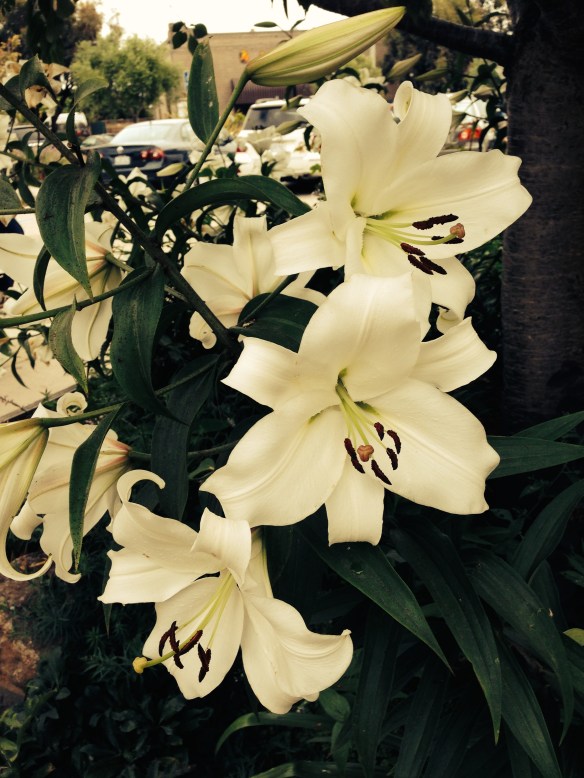Designing a garden bed around a theme yields practical and aesthetic benefits.
The aesthetic benefit of thematic garden design rests on the relationships among the plants: they are linked by being members of the class defined by the theme. In that respect, a thematic group is more coherent, aesthetically, than the ever-popular “grab-bag” approach to plant selection.
The practical benefit is a plan for selecting plants from the hundreds of thousands of available varieties. Once the gardener has chosen a theme, he or she has reduced the universe of possible plants to consider. This one action narrows the selection task and supports close evaluation of options.
A garden design theme is simply a concept to which plants relate. This definition embraces a very wide range of possible themes, which could be a single color or combination of blossom colors; a plant genus, e.g., rose, iris, daffodil; size, e.g., miniatures; bee-friendly, etc.
For today’s topic, consider a progression of four themes for low-maintenance gardening.
Theme #1: Zone-appropriate Plants. Every gardener should know the U.S. Department of Agriculture’s Plant Hardiness Zone in which his or her garden exists. The Monterey Bay area is in USDA Zone 9b, where minimum temperatures are in the 25–30 degree range; plants marked for Zone 9 should survive cold spells in that range. A great many plants are that hardy, so this theme excludes only plants that are vulnerable to cold and therefore high-maintenance. Nurseries also use UCDA zones to indicate the preferred zone for given plants. Plants that are rated for Zones 10 or 11 usually will thrive best in very warm climates, not in Zone 9.
Theme #2: Mediterranean Climate Plants. These are plants that have evolved to grow well in the world’s areas that have dry summers and moderate winters. These areas (again) are native to the central coast of California, the central coast of Chile, the southwestern coast of Australia, South Africa and the Mediterranean basin. A large number of plants are suitable for this theme, but this category still is significantly smaller that Theme #1.
Theme #3: California Native Plants. This theme is within Theme #2, of course, but it stands apart from the others because includes plants that are both suitable for the Mediterranean climate and the soils and fauna of this state. Soil chemistry and symbiotic relationships with birds, mammals, insects and microbial life contribute significantly to the growth of plants, and, ultimately, the success of the gardener.
Theme #4: Native Plant Communities. A great variety of plants are native to California, and many have evolved to grow best in specific environments within the state, and in communities with specific other plants. An oak woodland plant community is certainly different from one that occurs naturally on coastal bluffs and cliffs. For the ultimate in low-maintenance gardening, adopt a thematic design for a California native plant community that would be appropriate for your garden setting.
Consider a thematic design for each garden bed or each large area of your garden. Plant selection will transform a random process to a purposeful activity.
Books for Thematic Designs
Zone-appropriate Plants
The New Western Garden Book (Sunset, 2012)
Mediterranean Plants
Plant Life in the World’s Mediterranean Climates (Dalman & Ornduff, 1998)
California Native Plants
California Native Plants for the Garden (Bornstein, Fross & O’Brien, 2005)
Native Plant Communities
Designing California Native Gardens: The Plant Community Approach to Artful, Ecological Gardens (Keator, Middlebrook & Faber, 2007)





